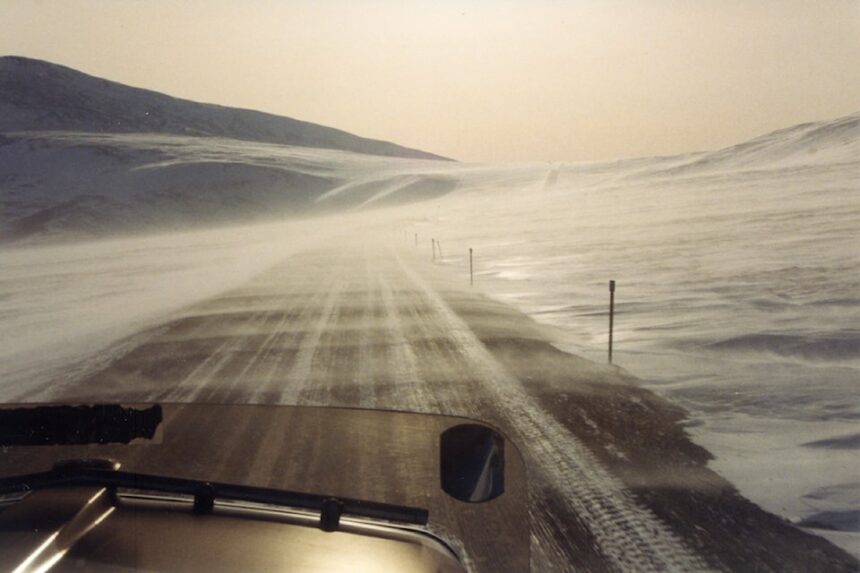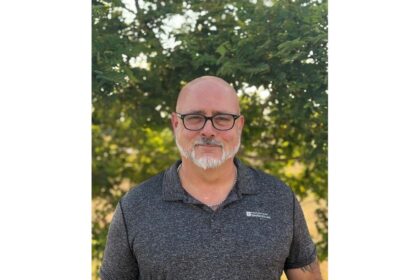Harold Cowx, a trucker in the North for decades has almost as many stories as miles on the odometer The Whitehorse Tim Horton’s is a great place to meet for friendly conversation, and that’s where I ran into Harold Cowx having a coffee. I had recently interviewed him and recorded his memories of 62 years of trucking, mainly in the North. Judging by those he greeted while I was there, this must be one of his regular haunts. Harold was born in Ontario 87 years ago. Along with a brother and a cousin, he enlisted in the Canadian army while the Korean conflict was raging. They wanted to serve in the same unit, but were deployed to different regiments. Harold ended up in the Canadian Guards, a “spit and polish” unit whose most prominent role was the performance of public duties in the Ottawa-Gatineau region. Operationally, it performed the role of light infantry. The regiment pioneered what is now the changing of the Ceremonial Guard in Ottawa. With the end of the Korean conflict and the downsizing of the military, Harold received an honourable discharge on medical grounds. Faced with a career decision, he had to choose between farming or truck driving. He chose the latter. He married in 1957 and it was that same year that he made his first delivery to the Yukon when he hauled a load of supplies to the mining camp at Elsa. He fell in love with the North and its tranquility. “Canada is a beautiful country,” he tells me, “But there is nothing like the North!” It wasn’t until 1973 that he first applied for operating authority in the Yukon, but found that operating from Ontario posed many bureaucratic challenges as each province he passed through had a different set of conditions and restrictions. In the meantime, he crisscrossed Canada, hauling goods from one end to the other, and beyond. He finally moved to Whitehorse in 1978 and purchased his Porter Creek home the following year. During his decades of driving truck in the north, he hauled for White Pass, and Cassiar. He was hauling material to the camps that were building the Dempster Highway before it was completed, and his last 20 years before retiring, he drove for Triline Carriers. His travels have taken him from Newfoundland in the east, to Miami, Florida and Texas in the south, and as far north as Tuktoyaktuk and the Beaufort Sea. He hauled supplies over the ice roads to the diamond mines in the Northwest Territories for several years. I asked him how many miles he had driven trucks during his career. On one Kenworth, (the best truck he ever had) he clocked 1.8 million miles. That’s 2.9 million kilometres, if you are wondering. He isn’t sure what his total was during his career, but he didn’t object when I suggested more than 20 million miles. That’s 40 round trips to the moon! That Kenworth was custom built for him in St. Therese, Quebec, specially equipped to run in the North. It was one of the heaviest tractor units they ever built, he told me. It was insulated, and even designed to run heated antifreeze in a line that ran through the fuel tank to keep the diesel fuel from gelling in the cold. When he took his trucks in for maintenance and repairs, he made sure that they took care of any issues they might encounter when inspecting them. This was a hedge against something going wrong when he was hauling far into the North where mechanic and parts were hundreds, if not thousands, of kilometres away. Harold’s Kenworth only let him down once. When climbing the hill at Tombstone on the Dempster Highway, the power divider on his transmission snapped. One of the other trucks travelling with him was able to take his trailer and park it safely nearby. It had only lumber and construction supplies, so nothing was damaged from freezing. He contacted the lodge at the start of the Dempster Highway for assistance, and Louis MacGillivray towed the damaged truck back to their garage. With the aid of his tight-knit community of Dempster truckers, Harold was able to arrange placing the replacement parts on a rig he knew was running from Edmonton to the Dempster Highway. The parts arrived swiftly, and MacGillivray and Harold quickly set to work making the repair. The total time from breakdown to finishing the repair was three days. Had they relied upon normal delivery of the parts, Cowx said it could have taken three to four weeks! “I always packed grub,” he said, “…’cause you never know when you’ll break down on the highway, get caught in a storm or encounter white-out conditions. You never know what’s going to happen. Sometimes, you can be stuck at the side of the road for 15 to 20 hours.” When running supplies into the north, along the Dempster Highway, he carried survival gear: winter parka, fur hat, boots good to minus 60 degrees, balaclava, coveralls and wool socks. Also included in his survival kit was toilet paper, but not for the purpose you would think. Place a roll of toilet paper in a tin can of the right size, add diesel fuel, and you have a handy heater that will keep you warm when the north winds blow. The wind can gust to 150 km/h and the temperature can plummet to the minus 40s – or colder – on the Dempster Highway. Harold had one roll-over there on this northern run, trapping a van underneath the trailers of his “B-train.” No one was seriously injured, and fortunately, another truck soon appeared to help. It was seven days before the wind subsided so that they could get the truck and trailers back on the road. By that time, they were completely encrusted with snow and ice. There was a gap in the cab window that allowed drifting snow into the interior of the cab, which was filled with layers of snow and sand before the recovery team arrived at the site. It can be a challenge to family life being on the road so much, but Harold raised four daughters and a son. One summer, he told me, he picked his son up when school ended, and together they travelled far and wide across two countries, hauling goods from one coast to another. He got his son back in time to start school in the fall. His son still doesn’t have a driving license to this day, he told me. I wonder if that road trip was all the driving he needed. Despite his heavy schedule on the road, Harold always made time to volunteer with the Sourdough Rendezvous for 29 years, helping with the axe throwing, log sawing, flour packing, and many other volunteer activities. Harold joined the Yukon Order of Pioneers a few years ago. He was invited to join many years before that when he was hauling fuel for MacKenzie Petroleum into Dawson City. The job involved bringing fuel from Valdez or other Alaskan points. But he had to turn down the first invitation because the Pioneer meetings conflicted with his work schedule. If he attended the meetings, he wouldn’t be able to make it to the Alaska border from Dawson before they closed for the evening. Harold Cowx is truly a pioneer in the transportation of goods in the Yukon. He drove truck for 62 years before retiring. It was in his blood and he loved what he did. “It’s a wonderful life if you enjoy it,” he told me. “If you don’t enjoy your work, get out of it.” Some days, he said, coming up some steep hill in the rain, that hasn’t been properly maintained, putting on the chains to improve traction, he wondered, “What the hell am I doing this for?” But taking it all into consideration, the pros outweighed the cons for 62 years. The first year after he retired, he told me, he would sit on the back deck of his Porter Creek home in the evening and listen to the hum of the truck tires on the nearby Alaska Highway, thinking: “That one’s going to Inuvik. Maybe another one is going to Alaska. I wonder if that’s Carlile out of Fairbanks, or Linden transport out of Texas. All the time, you’re thinking about the guys you trucked up the road with.” At 87 years of age, he’s not going back “onto the road,” but I bet he would, if he could. Michael Gates was the Yukon’s first Story Laureate from 2020 to 2023. His latest book, “Hollywood in the Klondike,” is now available in Whitehorse stores. You can contact him at msgates@northwestel.net
Monday, 22 Dec 2025
Canada – The Illusion
Search
Have an existing account?
Sign In
© 2022 Foxiz News Network. Ruby Design Company. All Rights Reserved.
You May also Like
- More News:
- history
- Standing Bear Network
- John Gonzalez
- ᐊᔭᐦᑊ ayahp — It happened
- Creation
- Beneath the Water
- Olympic gold medal
- Jim Thorpe
- type O blood
- the bringer of life
- Raven
- Wás’agi
- NoiseCat
- 'Sugarcane'
- The rivers still sing
- ᑲᓂᐸᐏᐟ ᒪᐢᑿ
- ᐅᑳᐤ okâw — We remember
- ᐊᓂᓈᐯᐃᐧᐣ aninâpêwin — Truth
- This is what it means to be human.
- Nokoma











